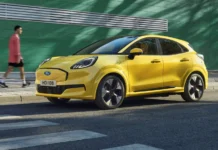Daimler has commenced testing of its autonomous vehicles in the United States. This is despite the new Chief Executive Officer- Ola Kallenius, stating that the automaker will “rightsize” its spending level on self-driving technologies.
Daimler’s autonomous-driving technology will more likely be applied to commercial vehicles for freight companies on long haul routes than taxis, Kallenius said at the company’s investor day in London last month, according to a Reuters’ report.
The company had initiated self-driving taxi tests in California to collect user feedback.
The fleet includes about 30 vehicles, mainly Mercedes-Benz S-class sedans equipped with sensor arrays such as long-distance, laser-scanning lidar.
According to the report, the test could last for several months.
Although the cars can pilot themselves, a safety driver is behind the steering wheel at all times.
It also stated that although the number of users would initially be restricted, the ultimate purpose of the pilot programme would be mainly to gain knowledge of what customers wanted or demanded from a self-driving car.
Daimler has already been testing Level 4 cars on public roads in Stuttgart, Germany. The California tests are the first time that occupants who are not employed by the company ride in the vehicles.
Daimler Mobility, which has a captive finance unit, is assisting with its expertise in fleet management to better understand the difference in expectations from conventional taxis.
“We have not put the project on ice. We are looking at where we can improve efficiency and gain synergies so we don’t unnecessarily duplicate our development work,” said one of the people, adding, “This pilot programme is about capturing the user experience.”
The sources gave neither details of the location nor extent of the tests.
Even though it will continue with self-driving taxis, Daimler believes there is a greater chance of making money more quickly with autonomous driving applications for heavy trucks hauling goods than with passenger cars taxiing people.
The company will shift spending on self-driving taxi fleets to autonomous cars for private use in less complex highway traffic rather than in a chaotic urban environment.
A full-scale deployment of the self-driving taxi business model would tie up a lot of capital with some uncertainties around the earnings potential, Kallenius said.
“At this juncture to be the first one out to do something like that at scale does not make sense. We are not stopping the development of robot taxis. We will go into the market when it’s right, and we do not think that is in the short to midterm,” Kallenius said.
Sign in
Welcome! Log into your account
Forgot your password? Get help
PRIVACY POLICY PAGE
Password recovery
Recover your password
A password will be e-mailed to you.












